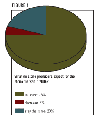
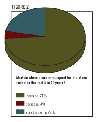
Of those who responded to the Stone World survey, which was sent primarily to stone fabricators, the vast majority (75%) expected the stone market to increase in 2006. Most of the other respondents (20%) felt that business would hold steady this year, with only 5% predicting a decline.
Of those predicting an increase for 2006, 86% predicted that business would rise over 10%, and over a third (36%) said growth would be more than 16% in 2006. Moreover, about one out of six fabricators (16%) said business would increase by more than 25% in the coming year.
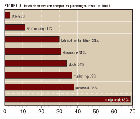
Fabricators pointed to increased work in the remodeling as well as the new construction sectors, since both allow ample opportunity for the use of stone countertops. “[We are seeing] demand in housing starts and remodel work,†stated one respondent. Another fabricator pointed out that the stone industry doesn't depend on new housing starts by saying, “If new home construction slows, remodels will increase.â€
Among the few respondents who predicted a decline in 2006, most said the drop-off in business would be relatively moderate - between 10 and 15% - and several cited the increased cost of gas prices as the reason for a potential downturn.

Long-term optimism
Looking at the stone industry over the next five to 10 years, respondents to the Stone World survey were equally optimistic. A total of 74% predicted industry growth, and 22% said business would hold firm over that time, with only 4% predicting a decline. Over one third of those predicting an increase (36%) felt it would be greater than 20%, and more than one out of five (22%) said that growth would be greater than 30% over the next five to 10 years. When asked about their reasons for long-term optimism, the fabricators once again pointed to the growing market and popularity of stone. Many respondents also noted the competitive price of granite as a countertop material. As one fabricator stated: “The price is accessible to the people.†Another commented: “Stone products will continue to be lower in cost.â€
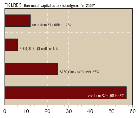
Success in 2005
Another basis for optimism among fabricators is the growth they enjoyed in 2005 over the previous year. Over two thirds of those polled (69%) said their business increased last year, with 26% saying that sales stayed the same and 5% reporting a decrease.Moreover, last year's growth was fairly significant, according to many of the fabricators polled. Over two thirds of respondents (68%) said growth was greater than 16%, and half said increases were more than 20%.
As for 2005 annual sales figures, more than half of respondents (55%) reported a total of $1 million or more, and nearly one out of eight fabricators (12%) reported a sales total of $5 million or more. Less than a quarter of respondents (23%) reported sales of less than $500,000 last year.
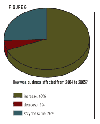
Overcoming obstacles
Of course, the stone industry is also facing a broad range of challenges - including competition from solid surface products, the devaluation of the U.S. dollar against the Euro and new stone fabricators entering the marketplace.For the most part, stone fabricators did not feel a loss of business from the competition of solid surface products such as DuPont Corian or Avonite, as 89% of them said it had no effect on them whatsoever. And among the few respondents who said solid surface affected their trade, 70% said the loss in business was less than 10%.
The devaluation of the U.S. dollar against the Euro was considered to be a greater problem among fabricators, as over one third (36%) said it has had a negative impact on their business. In particular, they said it resulted in higher material costs that they were largely unable to pass along to their customers.
To combat higher prices from European suppliers, some stone fabricators said they began purchasing materials from lower-priced producers in China or India, but many others said they “tightened up†their own operations to maintain the bottom line. “We improved efficiency to make up the difference of increased costs,†stated one fabricator. Some companies reported that they increased prices to offset this trend, and one creative fabricator “added a larger service package to give an added value for the expense.â€
Another threat to existing fabricators is the increase in competition from new stone fabricators in their market. At a time when there are more start-up fabrication shops than ever before, it is interesting to note that increased consumer demand seems to have - for the most part - offset the increased amount of players in the marketplace. Two thirds of respondents (67%) said that new stone fabricators had no direct impact on their business during 2005. Among the 33% who were negatively impacted by new stone fabricators in their region, nearly two thirds (62%) said that business was impacted only 10% or less.
However, many respondents said that the negative impact by some unskilled new fabricators can go beyond numbers. Several people mentioned that they feared a decline in quality among stone fabricators, citing “less respect for product and the skills of craftsmen to fabricate and install.â€
With this in mind, several fabricators called for the establishment of industry standards, saying, “Quality fabrications will keep the business growing.†Towards this end, the initiative of establishing industry standards is currently ongoing, as the Marble Institute of America is planning to launch an accreditation program later this year.
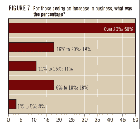
Future investments
Given the optimism for this year as well as the long-term - coupled with the desire to fend off competition through quality workmanship - it is logical that most fabricators are planning to increase investments in their operations in 2006. A total of 69% of those polled said they will increase their investments in equipment this year, and a significant number will also be upgrading their overall fabricating facilities (30%). The need for more manpower is also evident, as many respondents also said they will invest more in personnel (38%) in 2006.Perhaps demonstrating the fabricators' increased contact with consumers, many survey participants planned on increasing their spending on marketing (37%) and on showroom facilities (31%) in 2006.
Equipment purchases are being made with an eye on the residential market, especially for fabrication of granite countertops, and respondents are planning on making some bold investments as compared to previous years. For example, 42% of respondents said they are planning to invest in polishing machines this year. And the mean dollar amount they expect to spend on polishing units is over $75,000.
As for shapecutting machines such as CNC stoneworking centers and waterjets, 24% of respondents said they plan to invest in these areas this year. This is no small number when considering that the mean dollar amount to be spent on shapecutting machines reached nearly $135,000, according to the survey.
Other significant machinery investments will include bridge saws (20% planning to invest a mean dollar amount of over $55,000) and cranes (15% planning to invest a mean dollar amount of over $36,000).
As usual, hand tools were the most prevalent common area of investment, with 93% of respondents indicating they will invest in this area in 2006. However, with the mean investment among respondents totaling only $9,567 for hand tools, this is not expected to cause a huge impact for machinery suppliers.
Other equipment mentioned in the survey included quarrying machinery (7%), tile lines (2%) and block cutters (1%).
Overall capital outlay budgeted for 2006 is expectedly moderate, given the size of the typical fabrication shop. More than half of respondents (57%) are planning to outlay less than $250,000 in 2006, with another 25% planning to invest $250,000 to $499,999 this year. However, nearly one out of eight fabricators surveyed are planning major investments during 2006, as 12% said they would be investing more than $1 million in their business this year.

Respondent demographics
It is interesting to note that even though new stone fabricators have become prevalent in the industry, the participants in Stone World's survey were relatively well-established firms. A total of 79% of respondents have been in business for over five years, a figure very comparable to those given over the past few years, and over half (52%) have been in operation for more than 10 years. Nearly a quarter of respondents (24%) have been in business for more than 20 years.Overall, the stone industry is comprised of relatively small businesses, although the number of employees per company seems to be increasing a bit. Just over half the respondents (53%) have more than 11 employees, and 21% have more than 25 employees. Three years ago, only 40% of respondents said they had more than 11 employees, and just 16.6% said they had more than 25 employees.
Nearly half of the firms responding to this year's survey (47%) had 10 employees or less, and 25% said they had 1 to 5 employees.